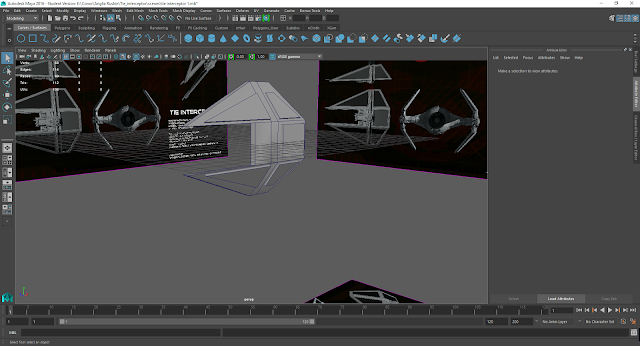In this lesson we continued to go into more detail about materials, the first thing that we went through was how to use projection mapping, projection mapping is different to setting a texture as an image, it is more like painting it on top of the object as a decal, this has its own setbacks though, as if you have a flat image bent around a sphere then the image will bend and deform around the object. There are also many different types of projection mapping, suitable for different polygons, some of these are planar, spherical, cubic and cylindrical mapping.
The excercise for this lesson was to use different types of mapping on different shapes, the results of which can be seen in the image above, where I have used cubic, cylindrical and spherical mapping on the spheres on the right side of the image, if you look closely you can see where the halfs of the images are placed, and how different types of mapping affects different objects.
Finally I looked at planar mapping on to a single plane, which you can see in the cube in the middle of the image above, this allows me to map an image onto a single face of an object, meaning if I wanted to make a rubix cube, for example, I could individually project an image for each side.
The most useful takeaway from this was seeing the affects that different types of mapping has on different shapes, as I found that the spherical mapping didn't work as well as cubic for mapping onto a sphere, which I found very interesting.
 |
| UV edited box |
Additionally in this lesson we looked at uv mapping, this is when we look at and change an objects mesh, which allows us to change the way an image is mapped onto an object in extreme detail.
I think that this is the most powerful form of tecxturing that we learnt today, because although it would take longer to edit the mesh of an object and properly align it and apply textures to it, it would yield the most detailed and highest quality results out of all the methods of texturing.



































